Should World Records be Faster? Episode 2
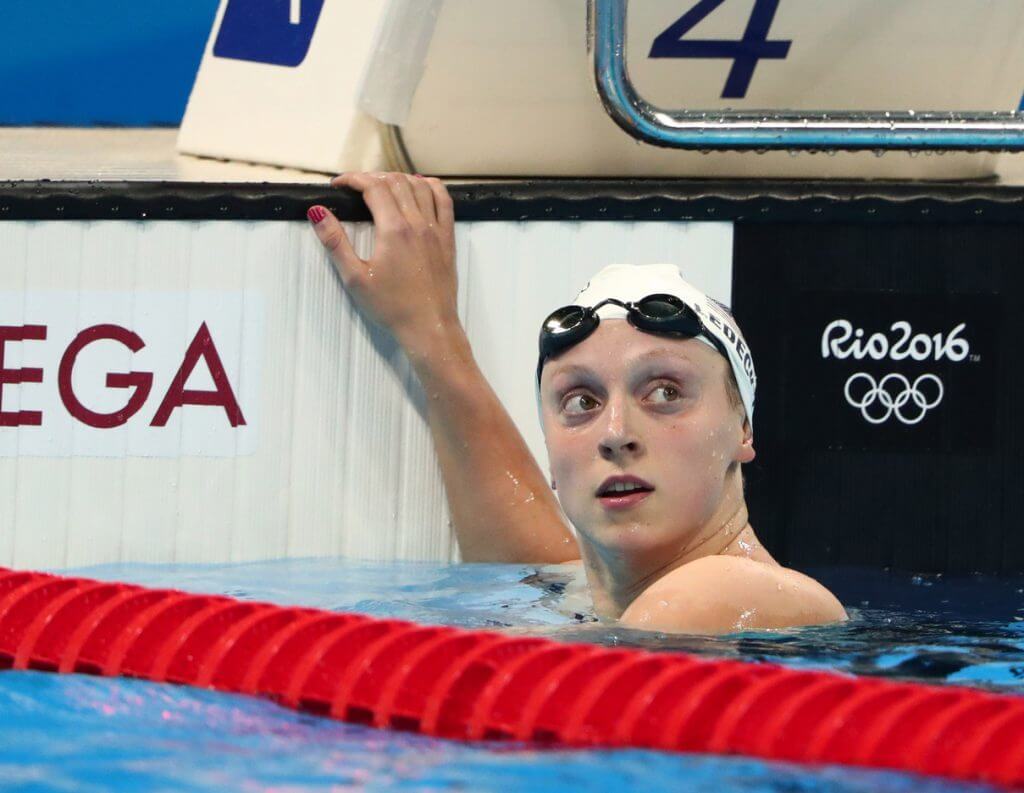
By Tucker Rivera, Swimming World College Intern.
Hello, and welcome back to “Should World Records be Faster?” Last week, we talked about the progression of world records since the mid-nineties and made predictions about what we can expect to see at the 2028 L.A. Olympic Games. This week, however, we’ll diverge from talking about sprint races and start looking at what we should be expecting out of 200s of stroke and the 200 IM.
Here are some key points to remember from last time:
- Breaststroke rules have changed substantially since the 1990s.
- The rubber era launched the sport far past its appropriate progression (men have experienced that effect more substantially)
- Despite the fact that top speeds haven’t yet matched those of the late 2000s, our sport has a significantly larger depth-of-field than it has ever had before.
How much faster are we now than two decades ago? How much faster can we expect to become before the 2028 Summer Olympic Games?
200 Backstroke, Men

Photo Courtesy: Rob Schumacher-USA TODAY Sports
In 1999, the 200 backstroke record was set by Lenny Krayzelburg at the PanPacs in Sydney, Australia. Over the next ten years, the record would be broken nine times. And while that may seem like a staggering quantity, the reality is that seven of those times were Aaron Piersol going a best time. The other two? Ryan Lochte at that 2007 Word Championships and 2008 Beijing Olympics.
The current record, held by Piersol, is a 1:51.92.
On the men’s side of the pool, backstroke has been absolutely dominated by Americans in recent history; winning gold in both Olympic distances at the last four Games, the United States has maintained its control of the stroke through swimmers like Tyler Clary, Ryan Murphy, Jacob Pebley and Matt Grevers. Murphy, the current world record holder in the 100 backstroke, seems to be the only man who might soon (if ever) become capable of beating Piersol’s 200 record.
200 Backstroke, Women
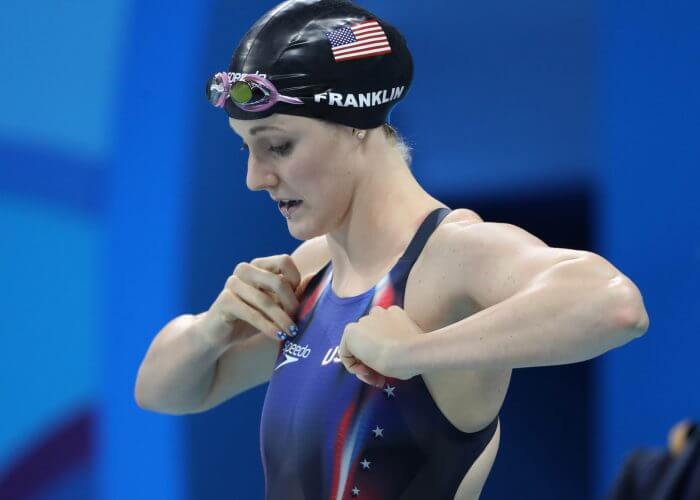
Photo Courtesy: Erich Schlegel-USA TODAY Sports
One of the most seldom-challenged records in all of the sport of swimming, the 200 backstroke has hardly been broken since the summer of 1991. In 1991, Krisztine Egerzegi swam the 200 backstroke in a 2:06.62. That mark wouldn’t be broken until the rubber era, wherein Zimbabwe national Kirsty Coventry broke the record by a little over two tenths of a second in a mid-season 2008 meet.
Coventry would venture to become the first woman to break the :06 and :05 barriers, though the current record is held by Missy Franklin. Franklin beat Coventry’s ’09 record by three quarters of a second (in a textile suit nonetheless) at the 2012 Olympic Games. Kathleen Baker and Katinka Hosszu seem to be favorites to challenge Franklin’s 2:04.06 record in the near future, but some believe that that record might be broken by the young national-team member Regan Smith.
Someone’s going to break the 2:04.06 barrier soon: the only question is who.
200 Freestyle, Men
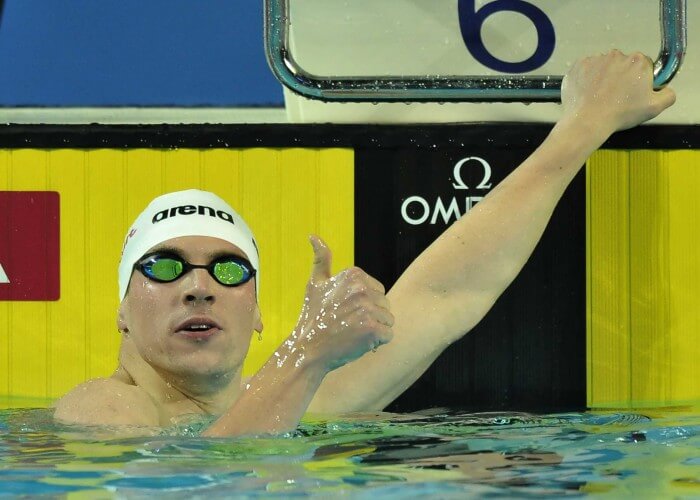
Photo Courtesy: arena
Arguably Australia’s best men’s event (with the 100 freestyle as the best women’s event), the 200 freestyle world record seems to be broken in spurts.
In 1989, following a large bout between the world’s top swimmers to maintain hold of the record, Italian Giorgio Lamberti set the record at a 1:46.69 – a time that wouldn’t be broken until 1999. However, in the time from March 23, 1999 to March 27, 2001, the world record would be exchanged between three men on over half a dozen occasions, settling on Ian Thorpe’s mark of 1:44.06.
In 2009, after losing to Michael Phelps at the 2008 Olympic Games, Paul Biedermann would go to beat Phelps’ record by a full second, settling at a 1:42.00. Notably, Biedermann dropped exactly four full seconds from his time at the Beijing Olympics. A true testament to the power of the rubber suit, Biedermann added a swim cap and custom-tailored suit to his repertoire before the ’09 World Championships en route to breaking the world record.
Nobody has approached the record since then; in fact, nobody’s come within a second of that time since it was set nine years ago. Furthermore, there’s never been a man capable of breaking the 1:43 barrier in a textile suit. Yannick Agnel’s gold-medal performance in 2012 is the fastest textile time in history, set at a 1:43.14.
200 Freestyle, Women
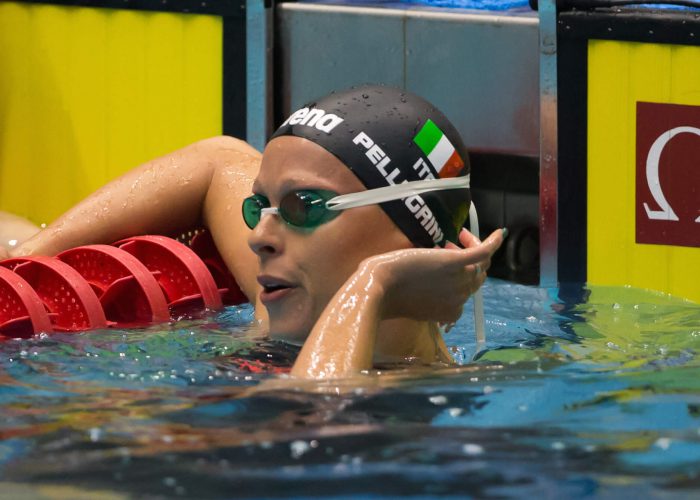
Photo Courtesy: Melissa Lundie
Arguably less contested than the women’s 200 Backstroke, the women’s 200 freestyle has hardly been approached in the last two and a half decades. In 1994, German Franziska van Almsick would set the world record mark at a 1:56.78 and not go another best time until the year 2002.
Then, Federica Pellegrini happened. From March of 2007 to July of 2009, Pellegrini would break the record on six occasions, with Laure Manaudou of France holding the record for a short stint in between the 2007 World Championships and 2008 Olympics.
Pellegrini would lower her best and the world best by almost four whole seconds.
Pre-Pellegrini? 1:56.47. Post-Pellegrini? 1:52.98.
She dominated the sport of swimming during the rubber-era and sent shockwaves through the sport that we’re still feeling today. One of the few remaining women’s records from the rubber era, the race’s world record has only been challenged in a textile suit by Allison Schmitt’s 1:53.61 from the London Games.
200 Breaststroke, Men
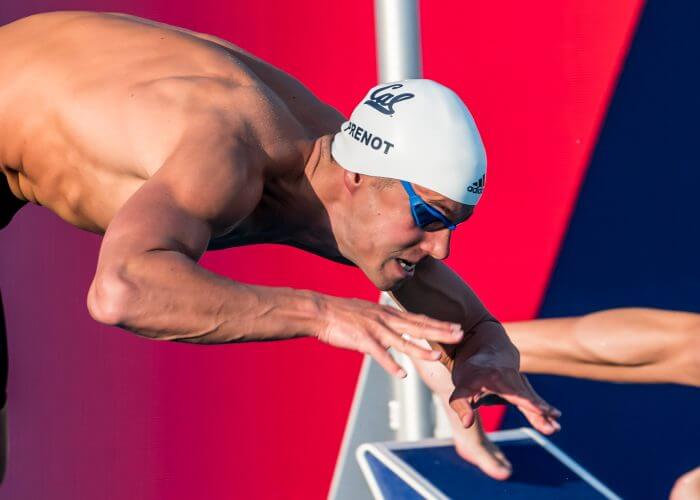
Photo Courtesy: Peter H. Bick
As mentioned in last week’s edition, breaststroke is the only stroke that seems to have been immune to the effects of the rubber-suit era. The current record, set in 2017, is held by Ippei Watanabe at a 2:06.67. That being said, it seems that the field of people capable of besting the record is exponentially growing.
At the 2016 Olympics, it took a 2:08.2 just to make the championship final; notably, Kevin Cordes’ eighth-place 2:08.34 would have earned a silver medal in the 2008 Beijing Games.
It seems that most any elite 200 breaststroker could pop-off a world record the next time he’s at a taper meet. American swimmers Josh Prenot (AR Holder), Will Licon, Daniel Roy, Michael Andrew and Andrew Wilson have all gone times within the last two years that would have made the semi-finals at the 2016 Olympic Games in Rio. A similar trend can be seen among swimmers from Japan.
200 Breaststroke, Women
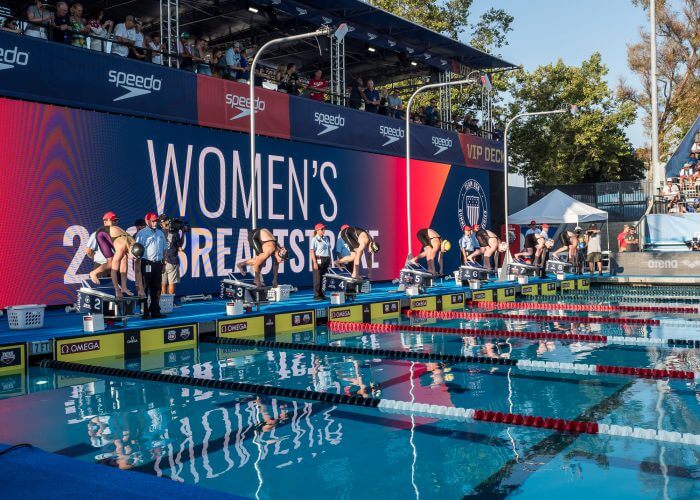
Photo Courtesy: Peter H. Bick
The women’s 200 breaststroke is getting very, very fast. Experiencing a similar stratification of depth to that of the men’s side of the event, the 200 breaststroke is one of the most highly competitive races in the world at the moment. In the last quarter century, the world record has been broken fifteen times by eight different women, featuring a staggering five and a half second drop in that same period of time.
Rebecca Brown’s 2:24.76 has since been replaced by Rikke Moller Pedersen’s 2:19.11, set in a textile suit in 2013. Notably, the record was only bested twice in the rubber era and first witnessed a sub-2:20 in 2012, when American legend Rebecca Soni captured gold for the U.S. at the 2012 London Olympics.
200 Butterfly, Men
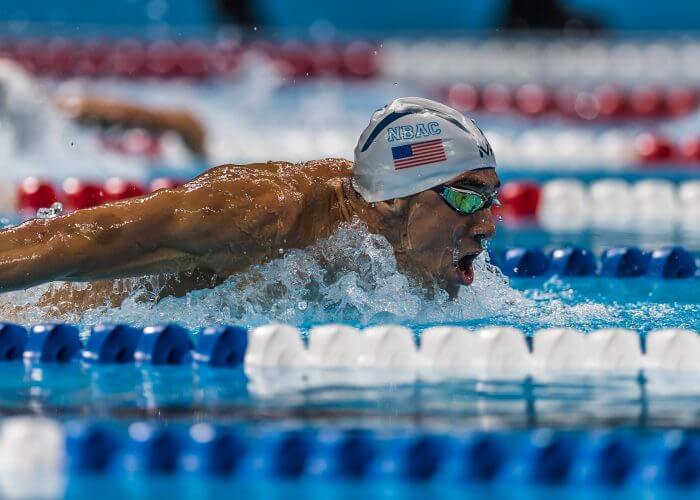
Photo Courtesy: Peter H. Bick
With Phelps leaving the professional world of swimming, the 200 butterfly might feel empty for a considerable amount of time. Never besting his top textile time from 2007, Phelps has owned the record in every form and fashion since the year 2001.
The last men to hold the record before him, Denis Pankratov and Tom Malchow, battled with the 1:55 barrier for years before Phelps went a 1:54.92 in the spring of 2001. Lowering the record to a 1:51.51 in 2009, Phelps’ only major loss in the event came to Chad le Clos at the 2012 Olympic Games.
The fastest time since Phelps’ retirement was Kristof Milak’s 1:52.71 at the CXX Hungarian Championships. Hungary, Japan and Russia seem to be producing the most swimmers who are capable of filling the competitive void left by Phelps’ absence. With only Jack Conger, Pace Clark, Justin Wright and Chase Kalisz breaking 1:55 since 2016, the U.S. seems to be in an open season for who will assume control of Phelps’ 200 butterfly crown. Either way, the heir to the throne will likely not be able to recreate Phelps’ dominance in the event.
200 Butterfly, Women
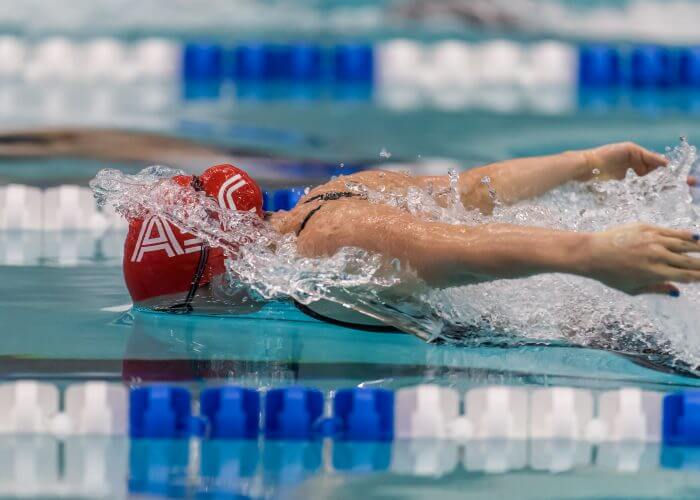
Photo Courtesy: Peter H. Bick
Given that no world records were set in the women’s 200 butterfly in the 1990s, we’ll have to look all the way back to 1981 to start our comparison.
Mary T. Meagher set the 200 butterfly record in 1981 with a 2:05.96. Nobody would beat that time until Susie O’Neill in the year 2000, with an only slightly better 2:05.81. In the nine years following O’Neill’s swim, the record would be broken 7 times, with four of those swims coming during the rubber era.
Liu Zige’s 2:01.81 has held up for nearly a decade. Zige set this record only a year after she obtained a best time of 2:04.18. Taking advantage of FINA’s allowance of the rubberized suit until the end of the 2009 calendar year, Zige’s time hasn’t been touched for nine years; history’s fastest textile time hasn’t even broken 2:04.
200 IM, Men
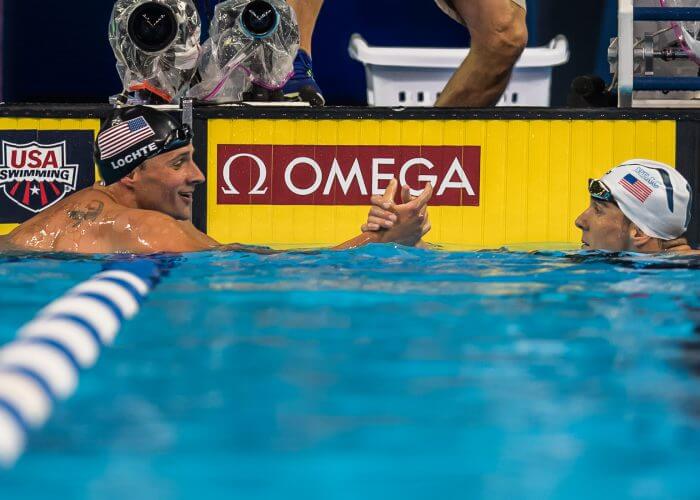
Photo Courtesy: Peter H. Bick
Finnish national, Jani Sievinen, held the fastest time from the 1990s at a 1:58.16. After that, it took nine years for Phelps to break his record to become the first man under the 1:58 barrier. In the coming years, Phelps would also become the first man to break 1:57, 1:56, and 1:54, with Lochte eventually surpassing him and setting the current world record at a crisp 1:54.00.
Lochte would never win an Olympic Gold in this event, despite his world record being set in a textile suit. Though he would come close in 2012, Phelps edged him out for the victory in one of the most highly anticipated match-ups in the history of the sport of swimming. The pair would face off for the final time in the United States at the 2016 Olympic Trials in Omaha, Neb.
200 IM, Women
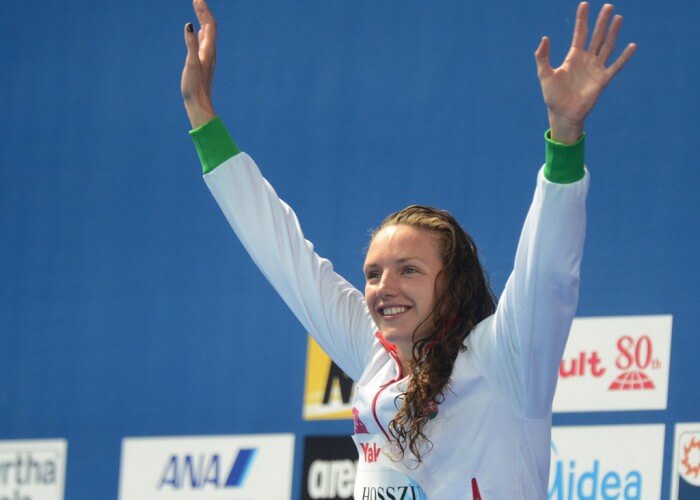
Photo Courtesy: R-Sport / MIA Rossiya Segodnya
After Wu Yanyan set the world record mark at a 2:09.72 in 1997, Stephanie Rice would become the first woman to break 2:09 eleven years later in 2008
This record has hardly been contested in the last two decades, with the only sizeable time improvement coming from the legendary swims of Ariana Kukors at the 2009 World Championships. In two days, the then 20-year-old dropped more than two seconds in only two days. Going from a 2:08 to a 2:06.15 over the course of the championships, her time wouldn’t be bested until Katinka Hosszú would break it at the 2015 World Championships by only three hundredths of a second.
Analysis
Perhaps to the surprise of some, it seems that the middle distance races were even more heavily tampered with by the rubber era than the sprinting events. While the 200s are significantly deeper than they were during the 1996 Atlanta Olympic Games, significantly faster than they were at the turn of the millennium and more highly competitive than they have ever been before, middle distance has yet to show the signs of recovery that the 100s and 50 have.
If we ignore breaststroke and IM (due to their rule changes), the only world record set at this distance after the end of the rubber era has been Missy Franklin’s 200 backstroke in London. As a sport at large, we’re just now approaching (in textile suits) what we were capable of accomplishing just ten years ago. Though women seemed to have been unfazed by the rubber era in the shorter sprints, women and men seem to have equally benefited from rubberized suits in the middle distances.
The question for the world records in the 200 freestyle, backstroke, and butterfly isn’t whether or not their world records should be faster. Rather, one might have to ask whether their current marks are too fast.
2028 LCM WORLD RECORD PREDICTIONS*:
Another promise of the introduction of this article was the prediction of how fast our times may become in the next decade, particularly in the year 2028. Therefore, utilizing the data alluded to in this article, we should be able to make predictions for the next 10 years by using regression modeling. Current world record times from the rubber suit era will also include the current world-best and textile-best times in the “world record” prediction equations.
Men’s 200 Breaststroke: 2:04.77
Women’s 200 Breaststroke: 2:17.43
Men’s 200 Backstroke: 1:51.59 (the first man to beat Piersol will do so in L.A.)
Women’s 200 Backstroke: 2:03.56
Men’s 200 Butterfly (top time): 1:52.36 (It’s difficult to say whether Phelps’ record can be broken without technological advancements in the sport.)
Women’s 200 Butterfly (top time): 2:02.40 (It’s likely going to take a while before someone breaks the current record.)
Men’s 200 Freestyle (top time): 1:42.23 (More realistically, expect someone to break 1:42 at the L.A. Games.)
Women’s 200 Freestyle: 1:50.95
Men’s 200 IM: 1:49.41
Women’s 200 IM: 2:03.53
*These predictions assume that there will be no major rule changes in any of the four strokes within the next decade.
All commentaries are the opinion of the author and do not necessarily reflect the views of Swimming World Magazine nor its staff.




I agree on the 200 BRASSE time although it could be broken at any time. There are dozens of men who could go out under 59 seconds and come back under 1:05.
As early as 2001 Ed Moses was doing 2:01 for SCM, 18 years later there are many who can do 2:02 or better for 200 SCM. Will take real guts to go that fast LCM, but breaststrokers are learning to have better streamlines and longer glides actually ends up with faster times.